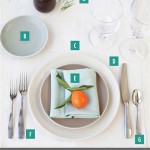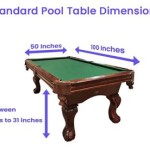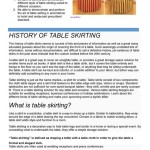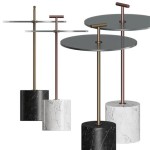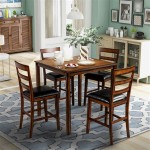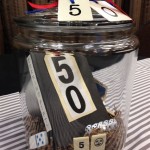Decorating Ideas For Living Room End Tables
Living room end tables, often underestimated, serve as vital anchors in the overall aesthetic and functionality of a living space. More than just surfaces to place lamps and drinks, they offer opportunities to introduce personality, enhance the room's design scheme, and provide much-needed storage and display options. The following outlines various decorating ideas for living room end tables, exploring diverse stylistic approaches and practical considerations.
Before embarking on the decoration process, it's crucial to assess the existing décor. Consider the room’s color palette, furniture style, and overall atmosphere. Is it a modern, minimalist space, a cozy, traditional room, or an eclectic mix of styles? The end table decoration should complement and enhance the existing elements, not clash with them.
The size and shape of the end table itself will also dictate the decorating possibilities. A small, round table presents different challenges and opportunities than a large, rectangular one. The height of the table relative to the surrounding seating is also important. Ideally, the surface should be roughly level with the arm of the sofa or chair to be easily accessible.
Functionality First: Prioritizing Needs and Practicality
The most successful end table decorations are those that balance aesthetic appeal with functionality. Before adding decorative items, consider the practical needs the table should fulfill.
Lighting: A table lamp is a common and essential element on most end tables. The type of lamp should be chosen to suit the room’s lighting needs and style. A tall, slender lamp can add height and drama, while a shorter, more compact lamp is suitable for smaller tables. Consider the lampshade material and color as well, ensuring it complements the overall décor.
Reading Materials: If the table is positioned next to a reading chair, consider incorporating books or magazines. Stacking books horizontally can create a visually appealing base for other decorative items, while a magazine rack or basket underneath the table provides convenient storage.
Storage: End tables with drawers or shelves offer valuable storage space for remote controls, coasters, and other everyday essentials. If the table has open shelving, consider using decorative boxes or baskets to conceal clutter and add visual interest.
Beverage Placement: Coasters are a necessity to protect the table’s surface from water rings. Choose coasters that complement the room’s style, whether they are made of stone, wood, or a more decorative material. A small tray can also be used to corral drinks and snacks, preventing spills and creating a more organized look.
By addressing these practical needs first, the remaining decorative elements can be added strategically to enhance the table’s functionality and aesthetic appeal.
The Art of Object Arrangement: Creating Visual Balance and Interest
Once the functional elements are in place, the next step is to arrange decorative objects in a visually appealing manner. The goal is to create a balanced and interesting display that complements the room’s overall design.
The Rule of Three: This is a frequently cited guideline in decorating. Grouping objects in odd numbers, particularly three, is often considered more visually appealing than even numbers. This creates a sense of asymmetry and visual interest.
Height Variation: Incorporate objects of varying heights to add dimension and prevent the display from feeling flat. A tall lamp, a medium-sized vase, and a smaller decorative object can create a balanced and eye-catching arrangement.
Texture and Material: Mix different textures and materials to add visual interest and depth. Combine smooth surfaces like glass or metal with rougher textures like wood or woven baskets. This creates a more tactile and engaging display.
Color Palette: Stick to a consistent color palette that complements the room’s overall décor. Choose objects in shades that harmonize with the existing colors, or introduce a pop of color with a single accent piece.
Negative Space: Don't overcrowd the table. Leave some negative space around the objects to allow them to breathe and prevent the display from feeling cluttered. Less is often more when it comes to decorating end tables.
Examples of object combinations include a lamp, a stack of books topped with a decorative object, and a small plant; a vase with flowers, a decorative bowl, and a small framed photograph; or a sculptural object, a candle, and a coaster set.
Stylistic Approaches: Tailoring Decorations to Specific Design Themes
The specific decorative elements chosen should reflect the overall design theme of the living room. Different styles require different approaches and aesthetic choices.
Modern/Minimalist: In a modern or minimalist space, simplicity is key. Opt for clean lines, geometric shapes, and a limited color palette. A single sculptural object, a simple lamp, or a small succulent can be enough to decorate the end table without overwhelming the space. Avoid clutter and focus on functionality.
Traditional: In a traditional living room, embrace richer textures and more ornate details. A traditional table lamp with a fabric lampshade, a stack of classic books, and a decorative box can create a timeless and elegant look. Consider adding a small antique or a framed family photograph.
Bohemian: A bohemian style allows for more eclecticism and personalization. Mix and match different patterns, textures, and colors. Incorporate vintage finds, travel souvenirs, and handmade items. A macramé plant hanger, a collection of crystals, or a stack of globally inspired books can add a touch of bohemian flair.
Coastal: In a coastal-themed living room, incorporate elements that evoke the beach and the sea. A nautical-inspired lamp, a collection of seashells, or a piece of driftwood can create a relaxed and breezy atmosphere. Use a color palette of blues, whites, and sandy neutrals.
Eclectic: An eclectic style embraces a mix of different styles and eras. The key is to create a cohesive look by carefully curating the elements and ensuring they complement each other in some way. Mix vintage and modern pieces, combine different patterns and textures, and add personal touches that reflect your individual style.
Farmhouse: A farmhouse style aims for a cozy and rustic feel. Utilize natural materials like wood, metal, and linen. A mason jar used as a vase, a vintage book, and a small metal basket can capture the farmhouse aesthetic. A neutral color palette with pops of muted color, such as sage green or dusty blue, enhances the overall ambiance.
Moreover, the end table decoration could reflect seasonal changes. During the fall, consider adding pumpkins, gourds, or autumnal-themed candles. In winter, incorporate pinecones, candles, or festive decorations. During spring, add fresh flowers, plants, or pastel-colored accents. In summer, coastal-themed decorations or bright, vibrant colors can enhance the seasonal spirit. Integrating these seasonal elements can keep the living room feeling fresh and relevant throughout the year.
Ultimately, successful end table decoration involves a careful consideration of functionality, balance, and style. By prioritizing needs, arranging objects thoughtfully, and tailoring the decorations to the room’s overall theme, it is possible to transform these often-overlooked surfaces into stylish and functional focal points within the living space.
Beyond the physical objects, consider the ambient light as well. Strategically placed scented candles or a small aromatherapy diffuser can add a layer of sensory experience, enhancing the overall ambiance of the living room. Choose scents that complement the room's décor and create a welcoming and relaxing atmosphere. For instance, a floral scent might be suitable for a traditional or bohemian-themed space, while a woody or earthy scent could complement a modern or minimalist room.
The selection of end tables themselves can also significantly impact the overall aesthetic. Consider purchasing a pair of matching end tables to create a sense of symmetry and balance, or opt for mismatched tables to add a touch of eclecticism and personality. The material of the end table, such as wood, metal, glass, or marble, should be chosen to complement the existing furniture and décor. Additionally, consider the base design of the end table. A table with ornate legs can add a touch of elegance, while a table with a simple, minimalist base can create a more modern look.
Regular maintenance of the end table display is also important. Dusting the surfaces regularly prevents buildup and keeps the objects looking their best. Occasionally rearranging the items or swapping out a few pieces can freshen up the look and prevent the display from becoming stale. Consider decluttering unnecessary items to maintain a clean and organized appearance.

How To Style An End Table Like A Pro Stonegable

Home Decor 101 How To Decorate End Tables Side Table Living Room

Tips For Decorating End Tables The Lazy Girl S Timesaving

Simplified Decorating End Table Decor Ideas Bless Er House

Driven By Decor Living Room Corner

5 Tips To Decorate Accent Tables Like A Pro Setting For Four Interiors

27 Coffee Table Decor Ideas How To Style A Modern

A Lesson From Bowl Of Pears Farmhouse Decor Living Room Farm House Home Accessories

36 End Table Decor Ideas To Complete Your Home

White Farmhouse End Table Tables Farm House Living Room Side Decor

